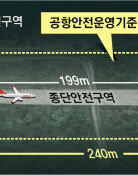New Weather Forecasting System Plagued With Doubt
New Weather Forecasting System Plagued With Doubt
Posted November. 06, 2008 09:38,
The new neighborhood weather forecast system has begun operations after three years of preparation that began in 2003, starting 5 p.m. Friday.
Unlike the previous system that produced weather reports every six hours by city and county, the new system makes forecasts every three hours for 3,584 small towns and villages by dividing the nation in five-kilometer intervals.
Weather is forecast in a three-hour block every two days.
The Dong-A Ilbo evaluated the accuracy of rain forecasts from Friday through Tuesday in six dongs where the Korea Meteorological Administration and its regional offices are located. The comparison of the neighborhood reports announced after 5 p.m. on the previous day with the weather, however, showed low accuracy of the hourly forecasts.
○ Inaccurate hourly predictions
Among 30 weather reports announced over the five-day period in the six districts, five predicted rain whereas 25 predicted fine weather.
The 25 predictions of no rain turned out to be correct, and four out of five days that were forecast to see rain also saw showers. The accuracy is considerably high if the results are evaluated by the traditional method of predicting the weather by day.
The new method, however, fell short of the original goal of providing forecasts on specific areas on an hourly basis. All five rain forecasts failed to accurately predict when it would start and stop raining.
Last week on Thursday, a weather forecast said it would rain between 3 to 6 a.m. Friday and stop between noon and 3 p.m. the same day in Shindaebang 2-dong, Seoul, where the weather bureau is headquartered. The estimated rainfall was five to nine millimeters in the morning and one to four millimeters in the afternoon.
The time the rain stopped and the amount of rainfall were noticeably inaccurate, however. Rain began at 4:49 a.m. as predicted but stopped at 9:37 a.m., several hours earlier than forecast. Precipitation was 23.5 millimeters in the morning alone, much higher than forecast.
Moreover, Saturdays forecast that Shindaebang 2-dong would see rain between midnight and 6 a.m. Sunday was also incorrect.
Rain was forecast between 9 a.m. and noon Friday in Unam-dong, Gwangju, and Guseong-dong, Daejeon, where regional weather stations are located. Forecasts on when rain would start and stop proved inaccurate, as Unam-dong rained from 1:08 p.m. through 2:44 p.m. and Guseong-dong from 8:09 a.m. through 1:59 p.m.
Sacheon-myeon in Gangneung, where Gangwon Provinces weather station is based, was forecast to rain between 6 a.m. and 3 p.m., but rained from 1:35 p.m. and 2:53 p.m.
○ New forecast method on the right track
Experts say the neighborhood forecast system cannot accurately predict the amount and time of rainfall since it hardly differs from the existing method in observation data, prediction models and statistical techniques.
They, however, give a positive assessment of the weather agencys new attempt and intent to provide more accurate forecasts.
The weather bureau is incapable of predicting the exact hours of rain for the moment. The neighborhood forecast system is merely the outcome of dicing regions from the existing system, said Byeon Hee-ryong, a professor of atmospheric environmental science at Pukyong National University. But Id give a positive assessment in the sense that a new weather forecast is a new attempt to push technology to evolve in the future.
Forecasting techniques have not drastically improved. Our goal is simply to improve the weather forecasting system to meet the demands of the people, said Hong Yun, a director at the Korea Meteorological Administration.
Errors in weather forecasting is a burden we will always have to shoulder, but we will strive to gradually improve accuracy.
firedy@donga.com






